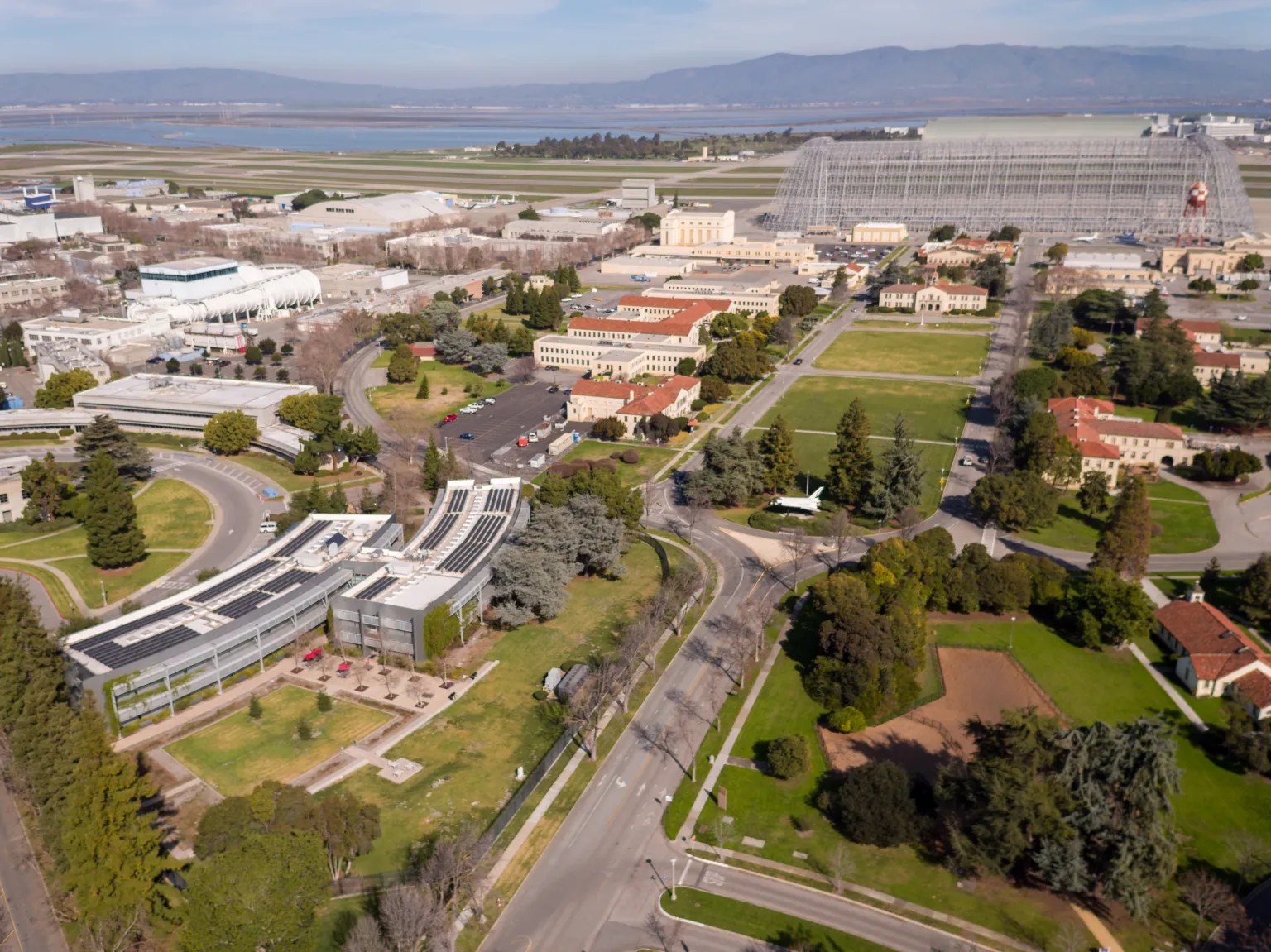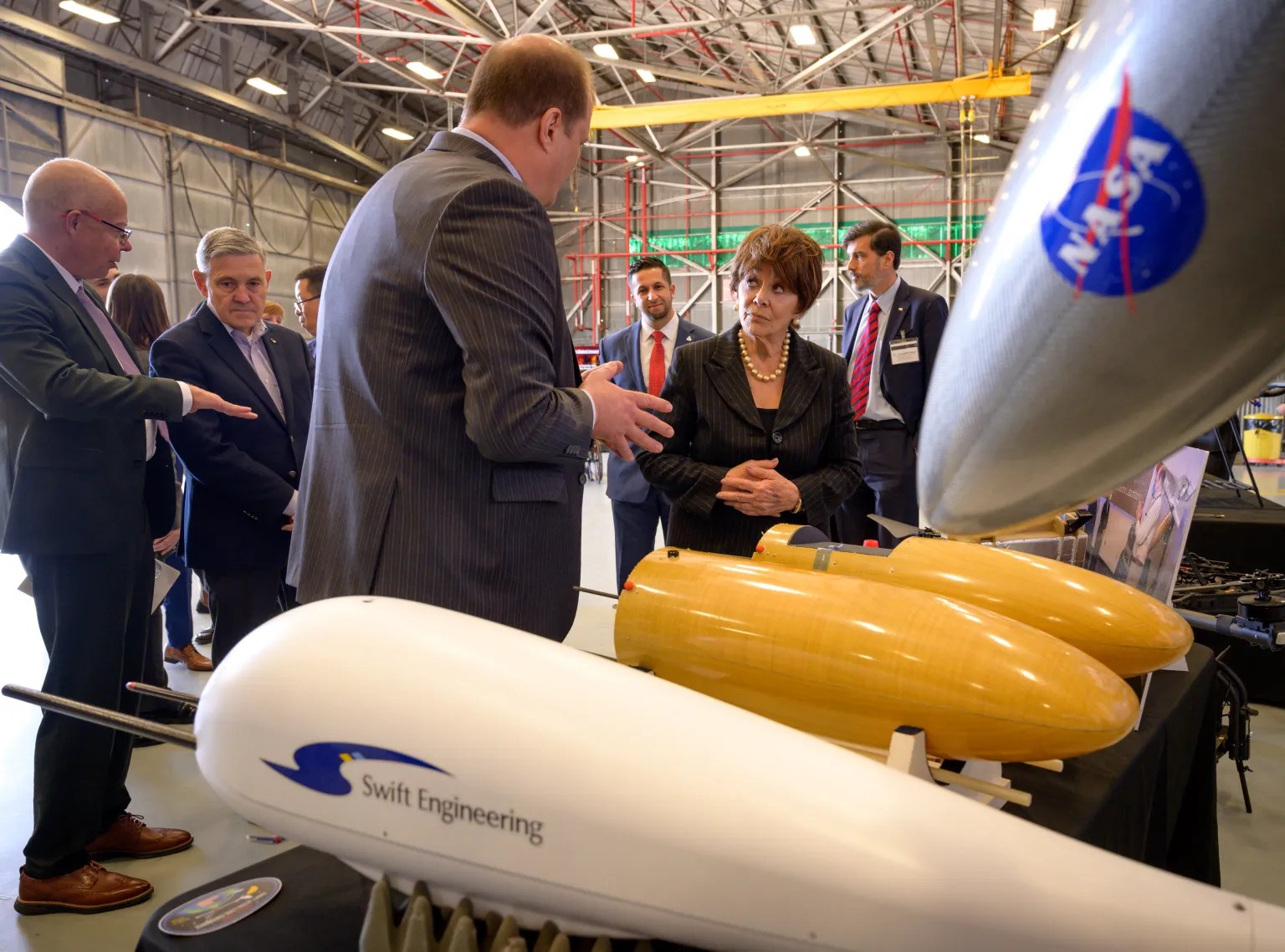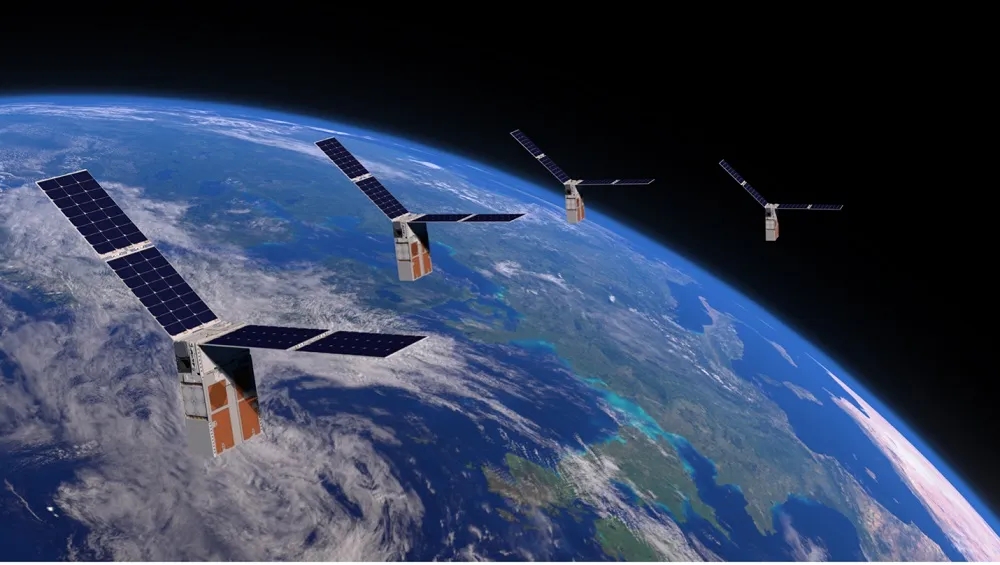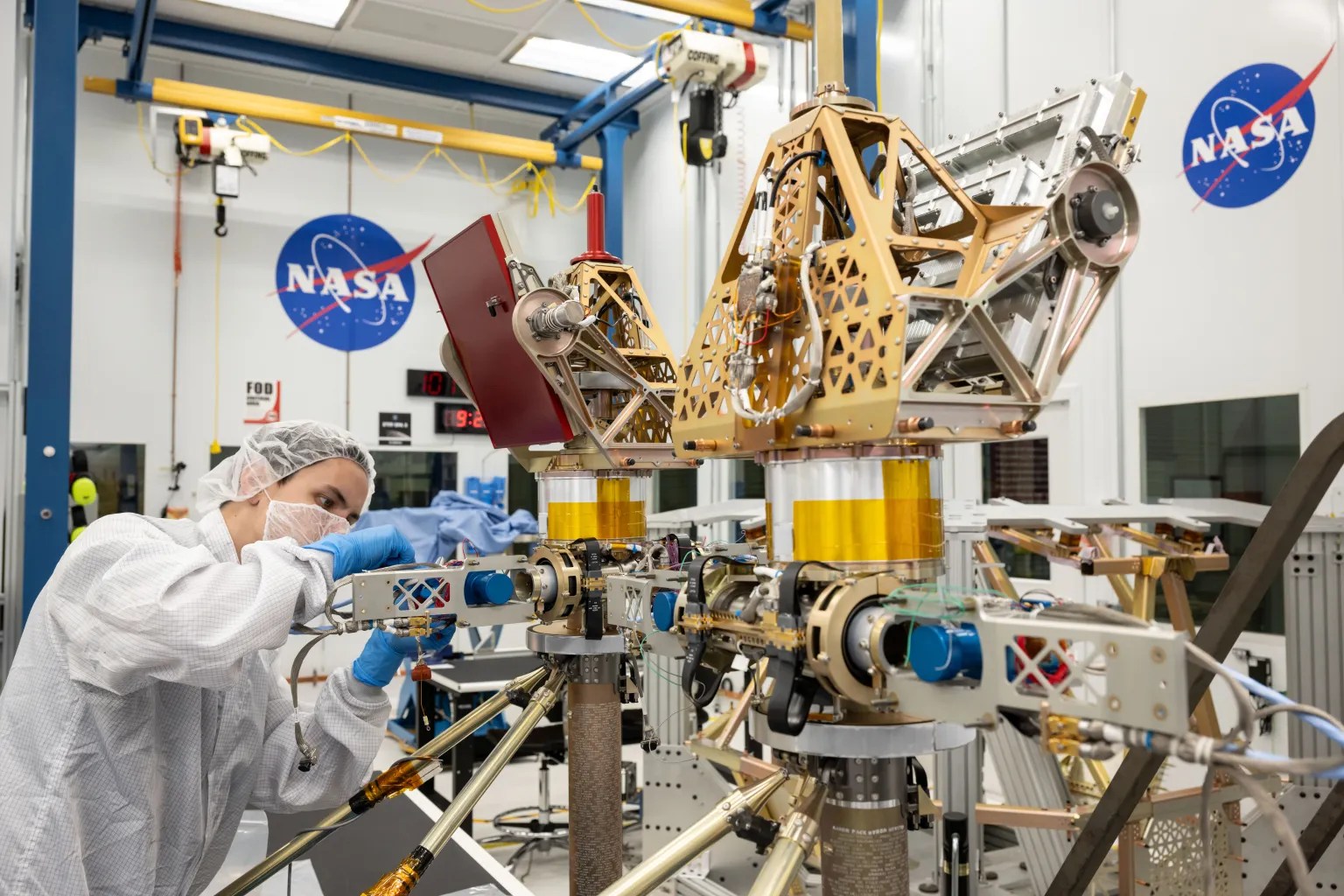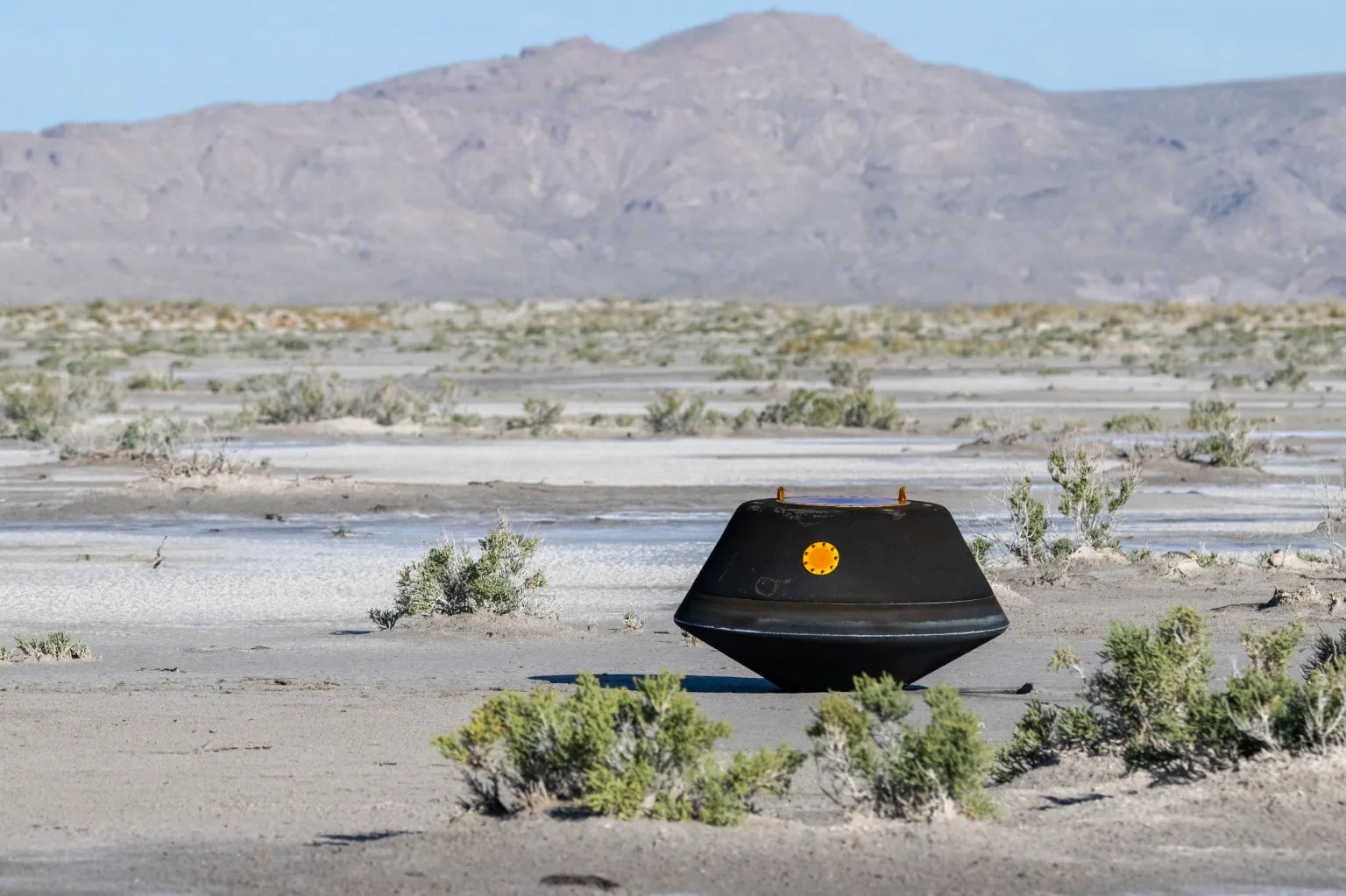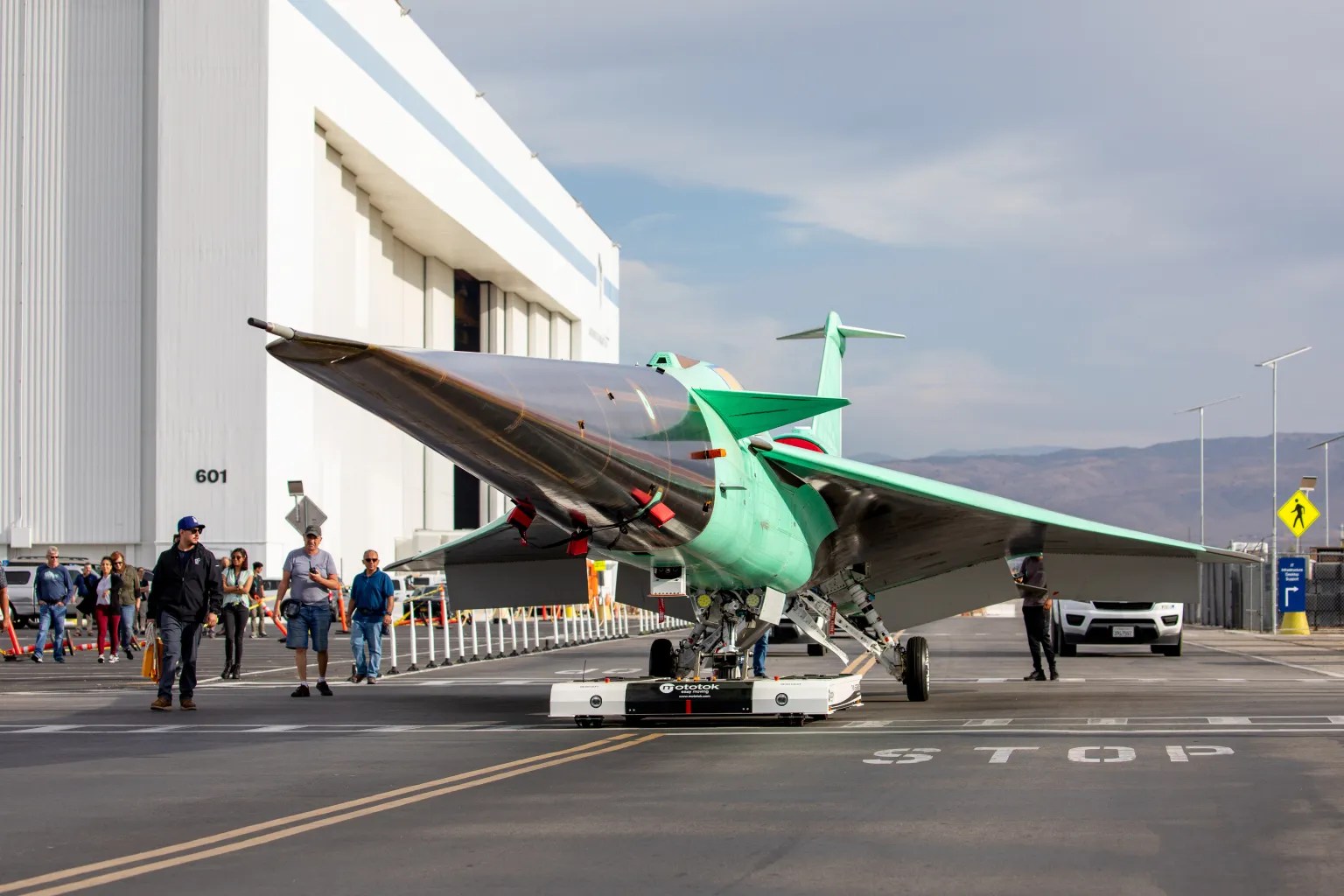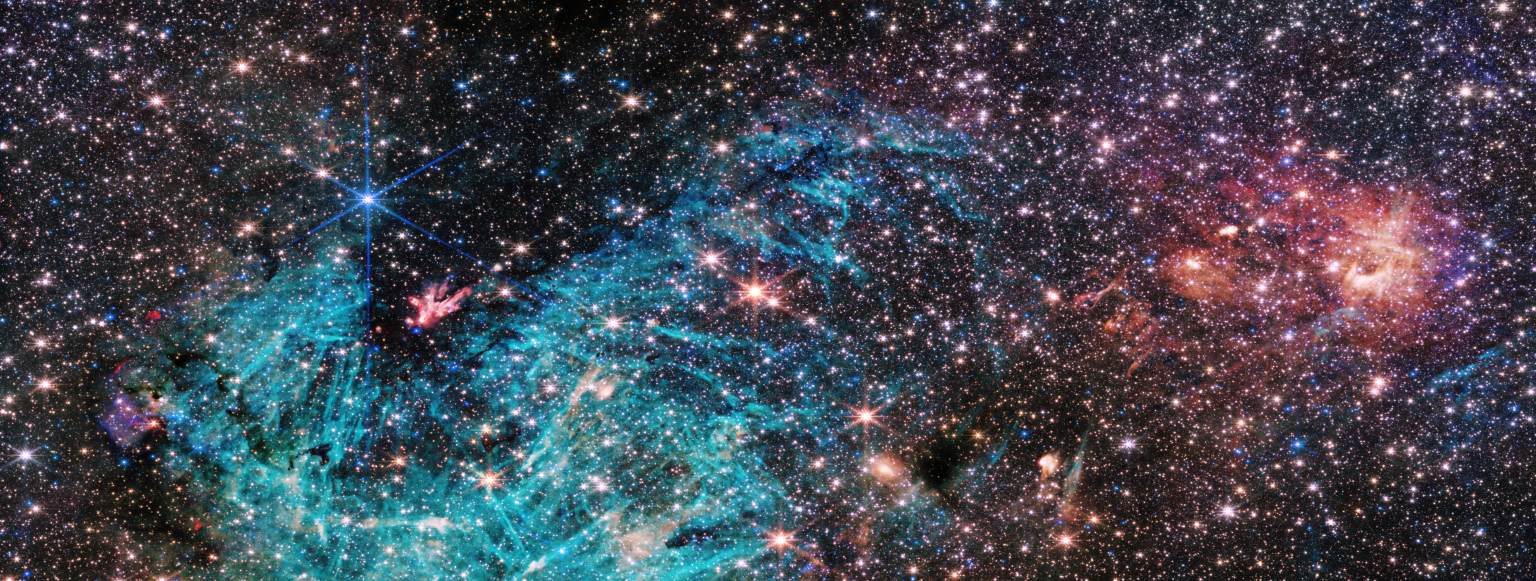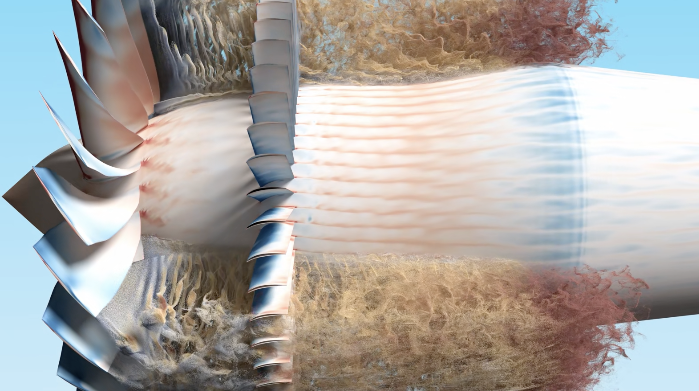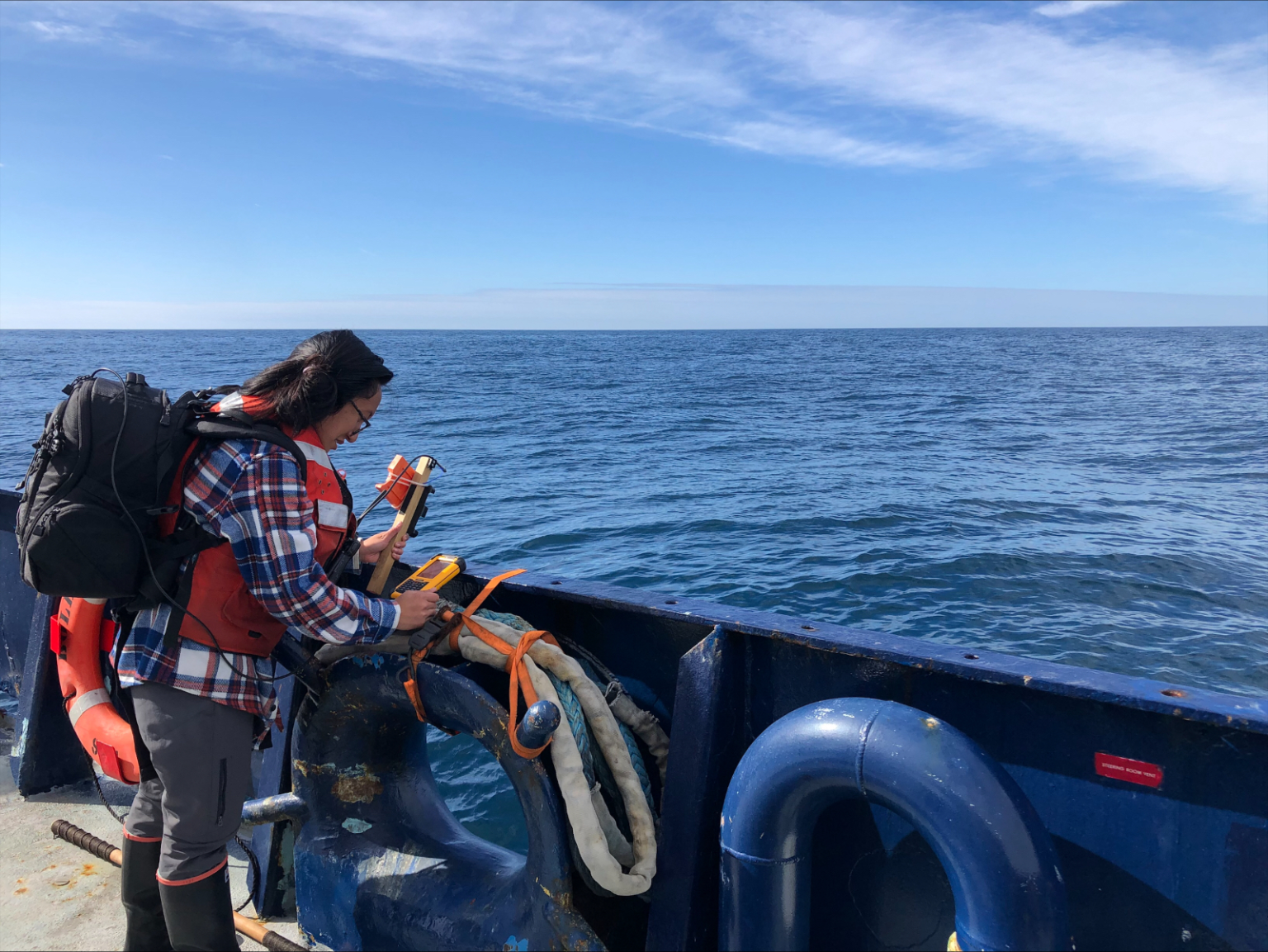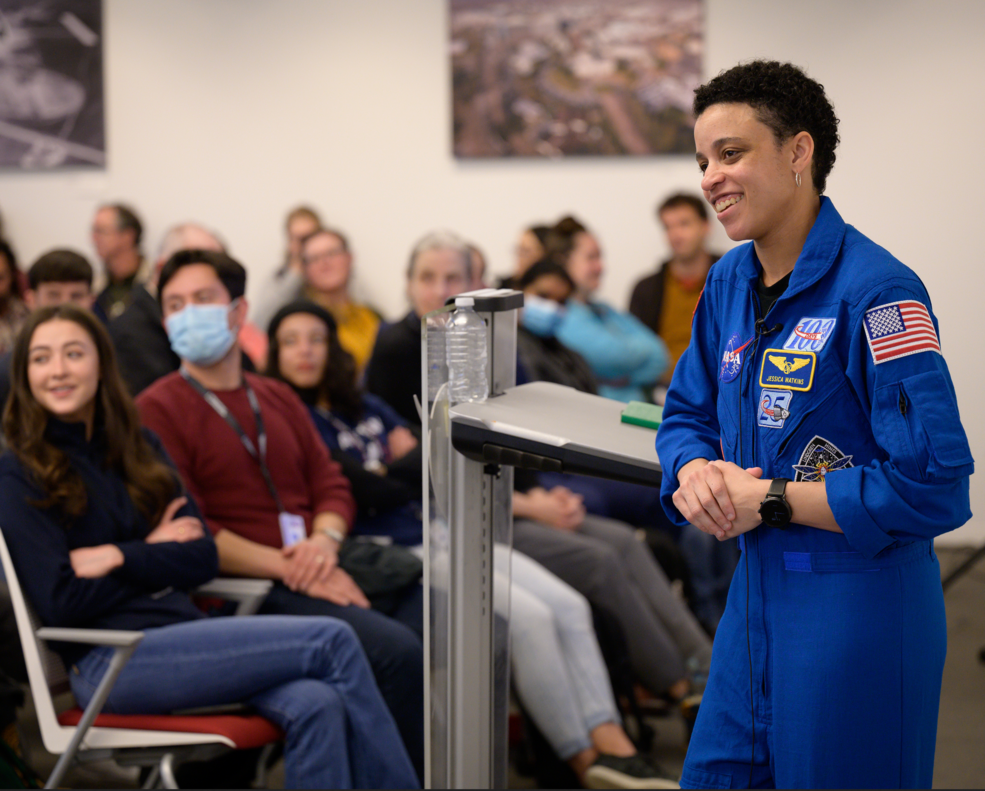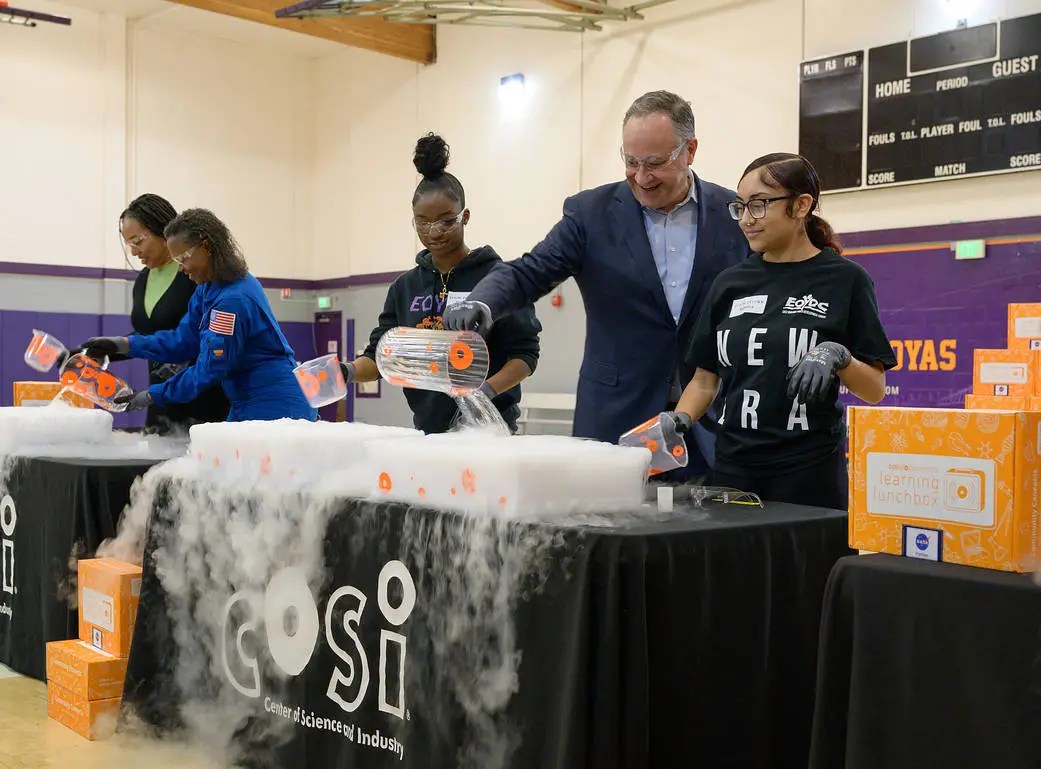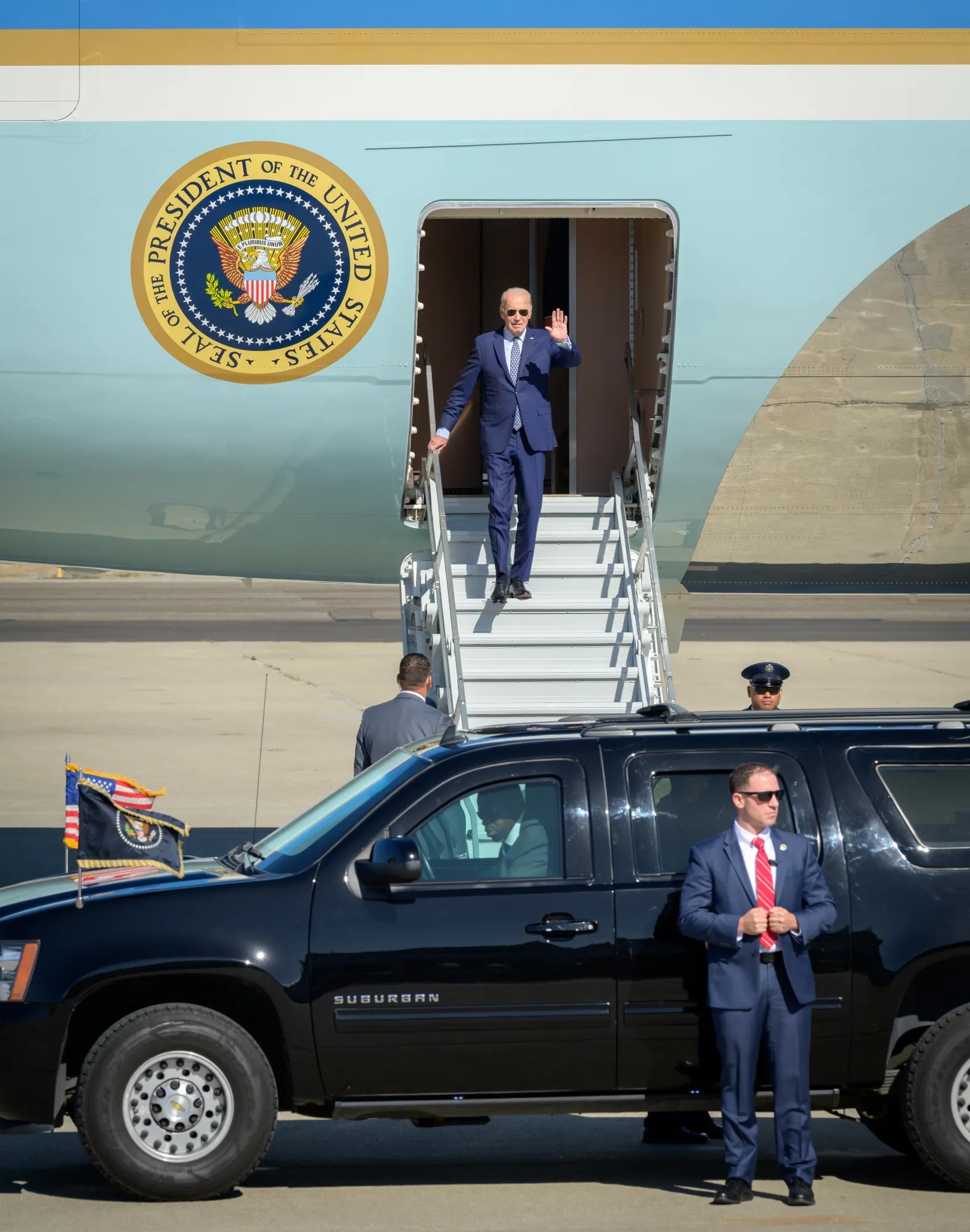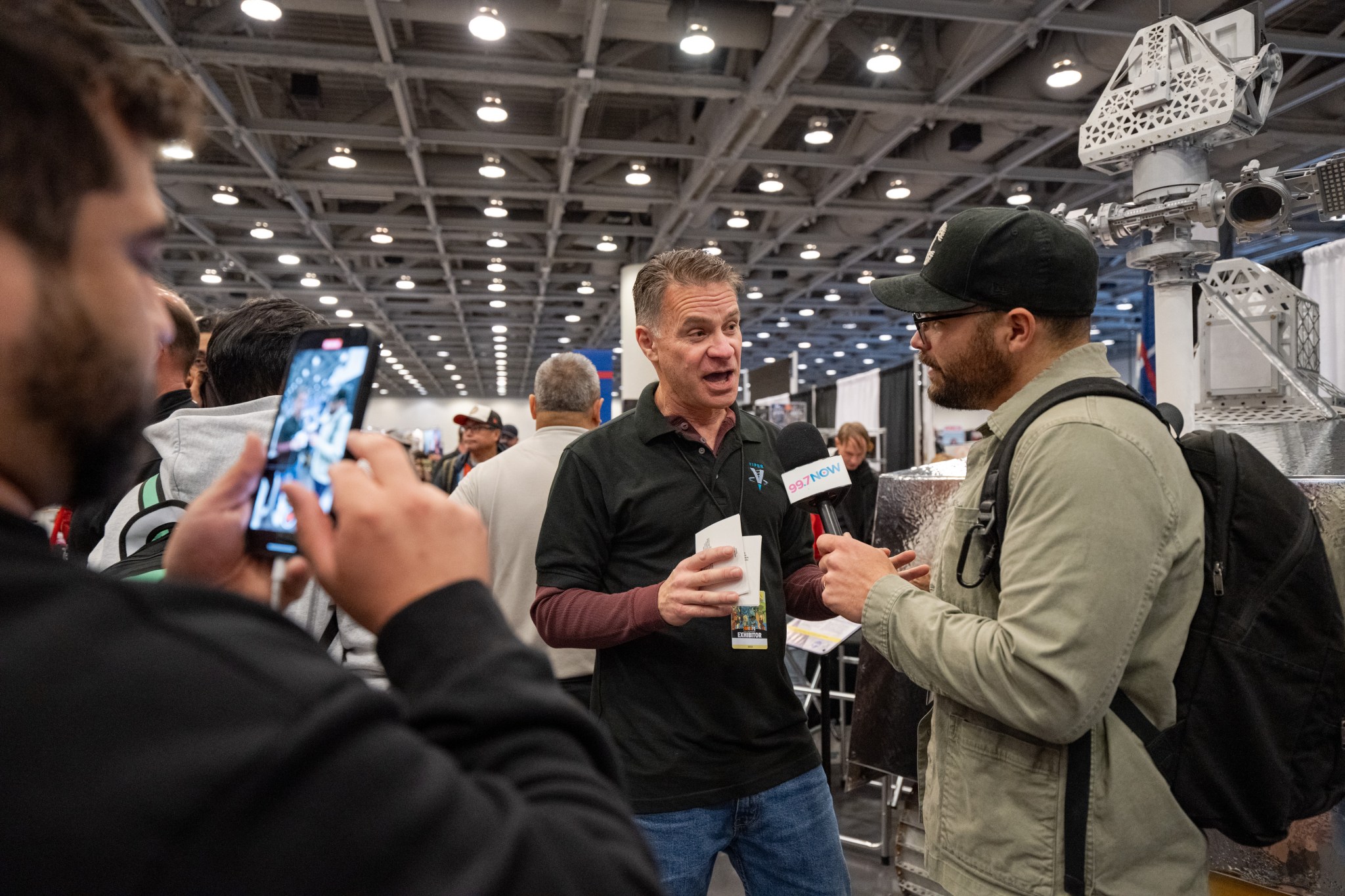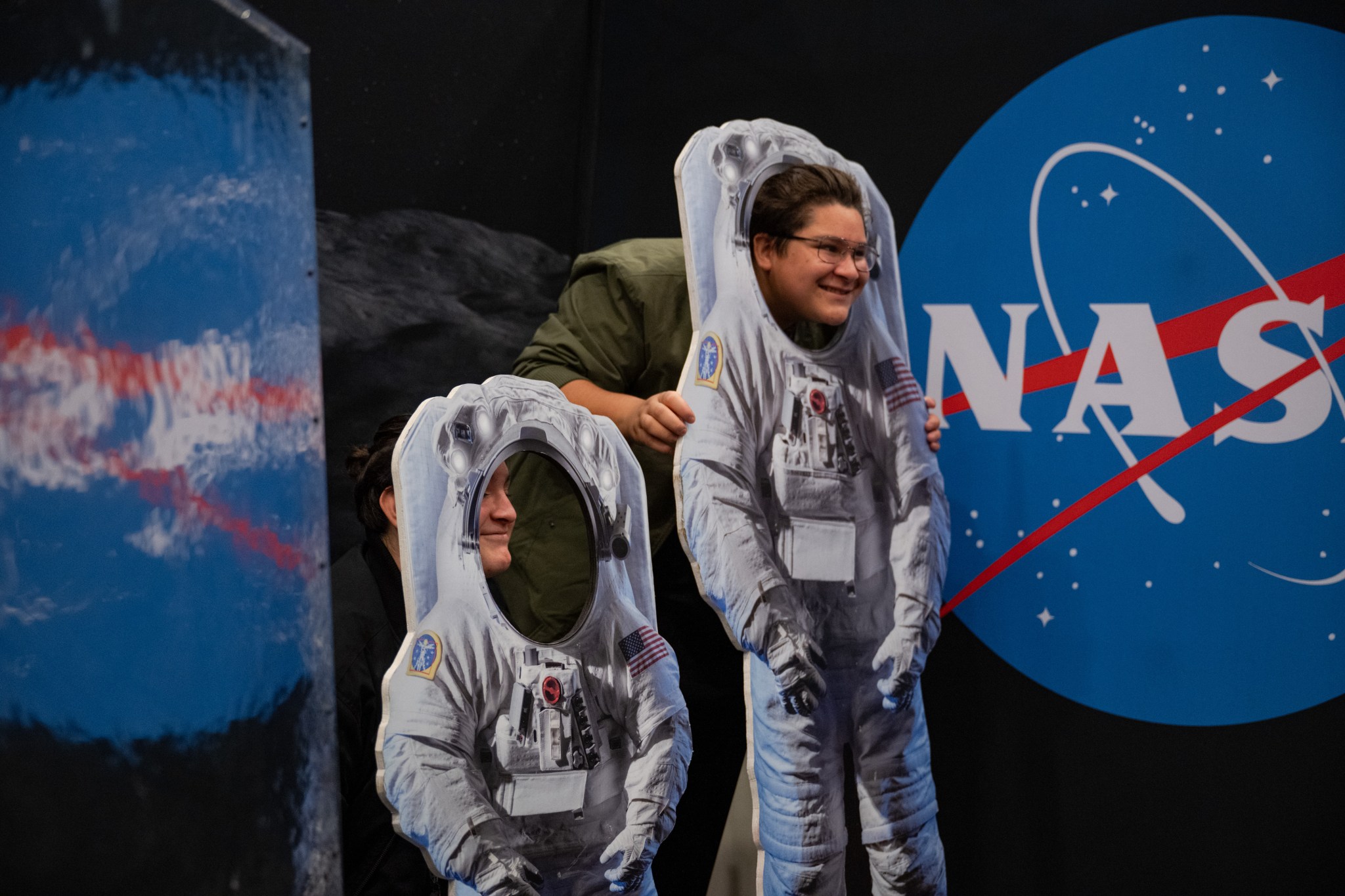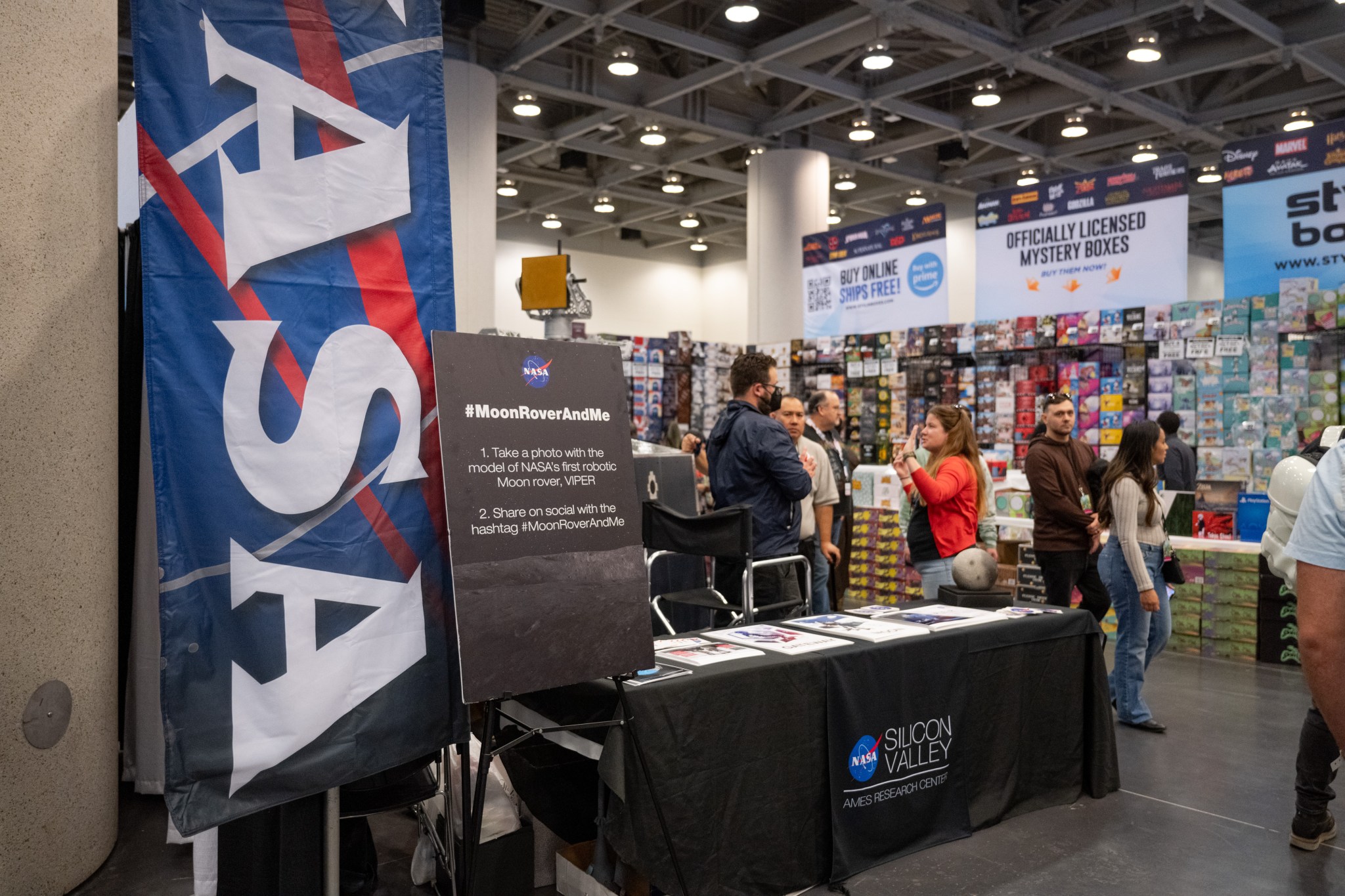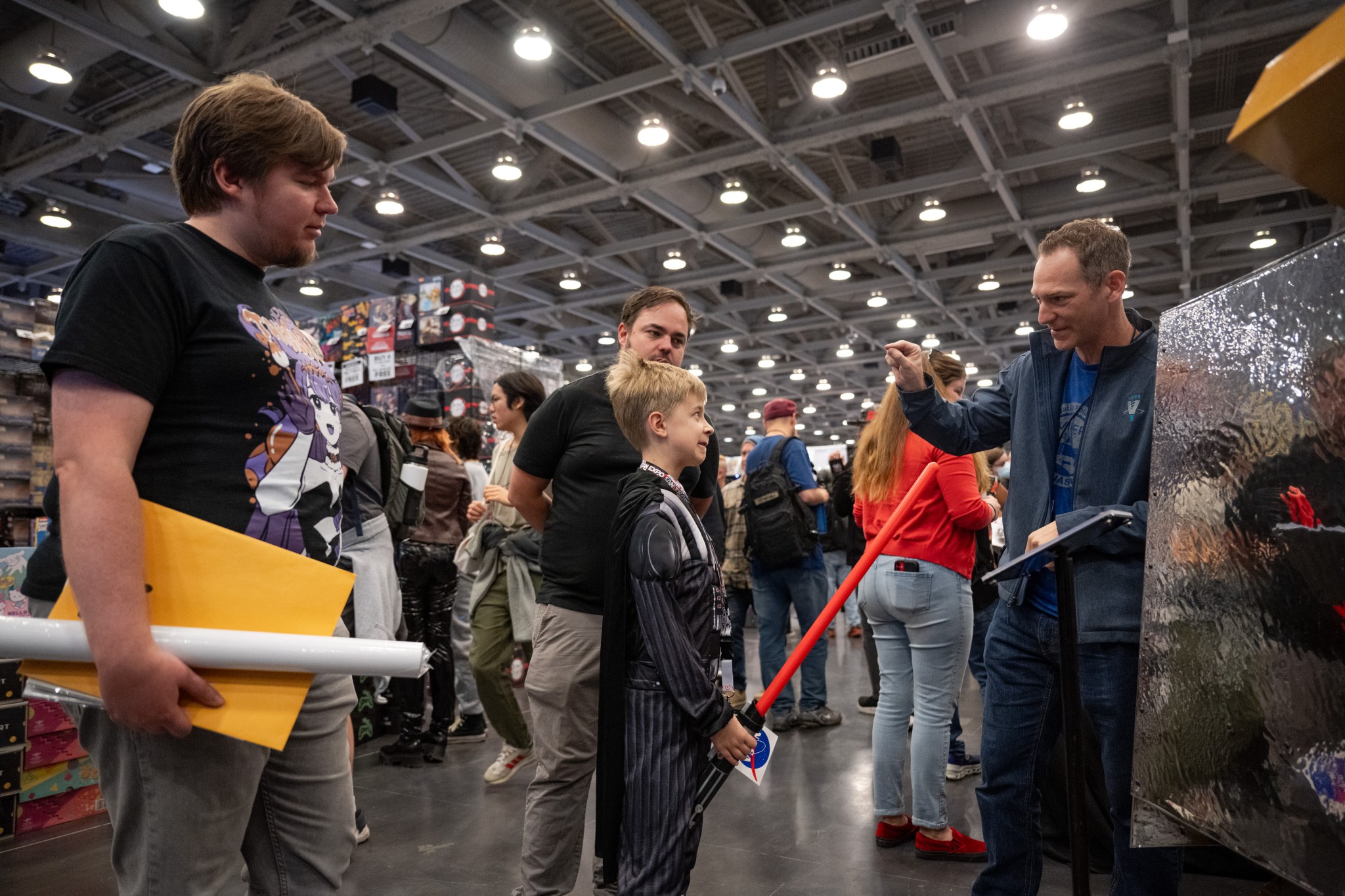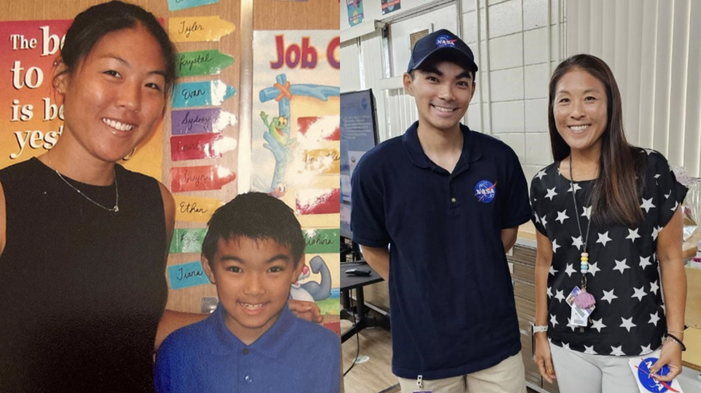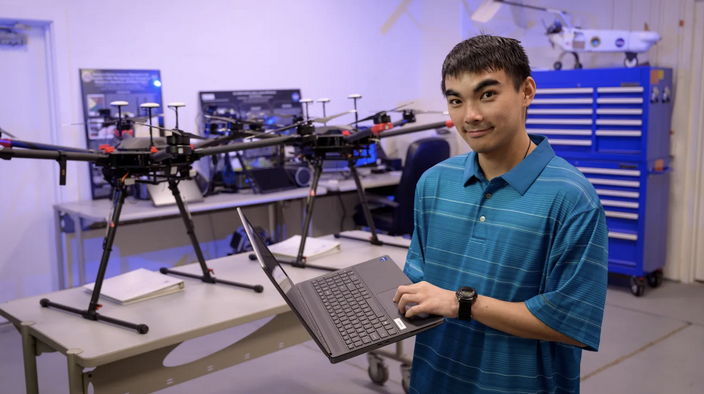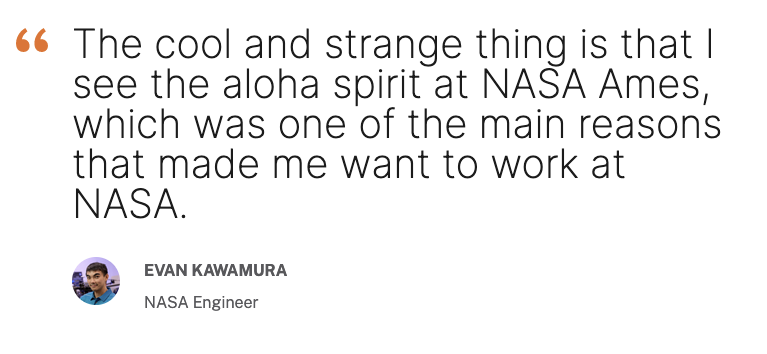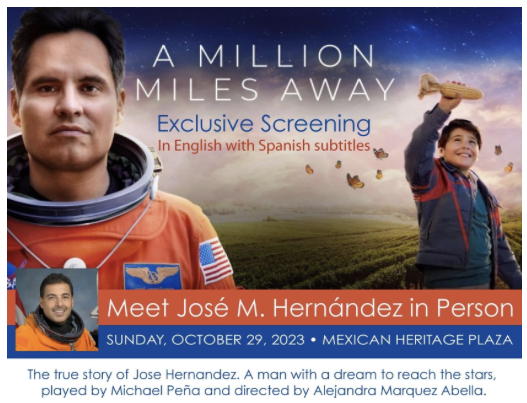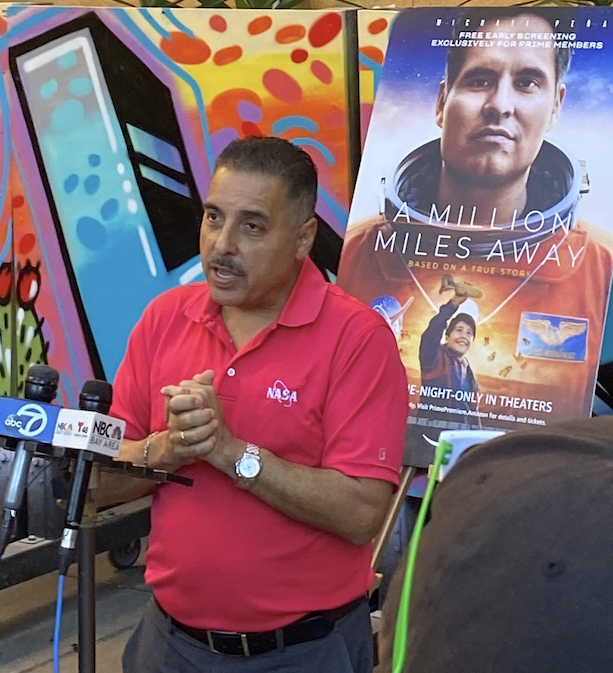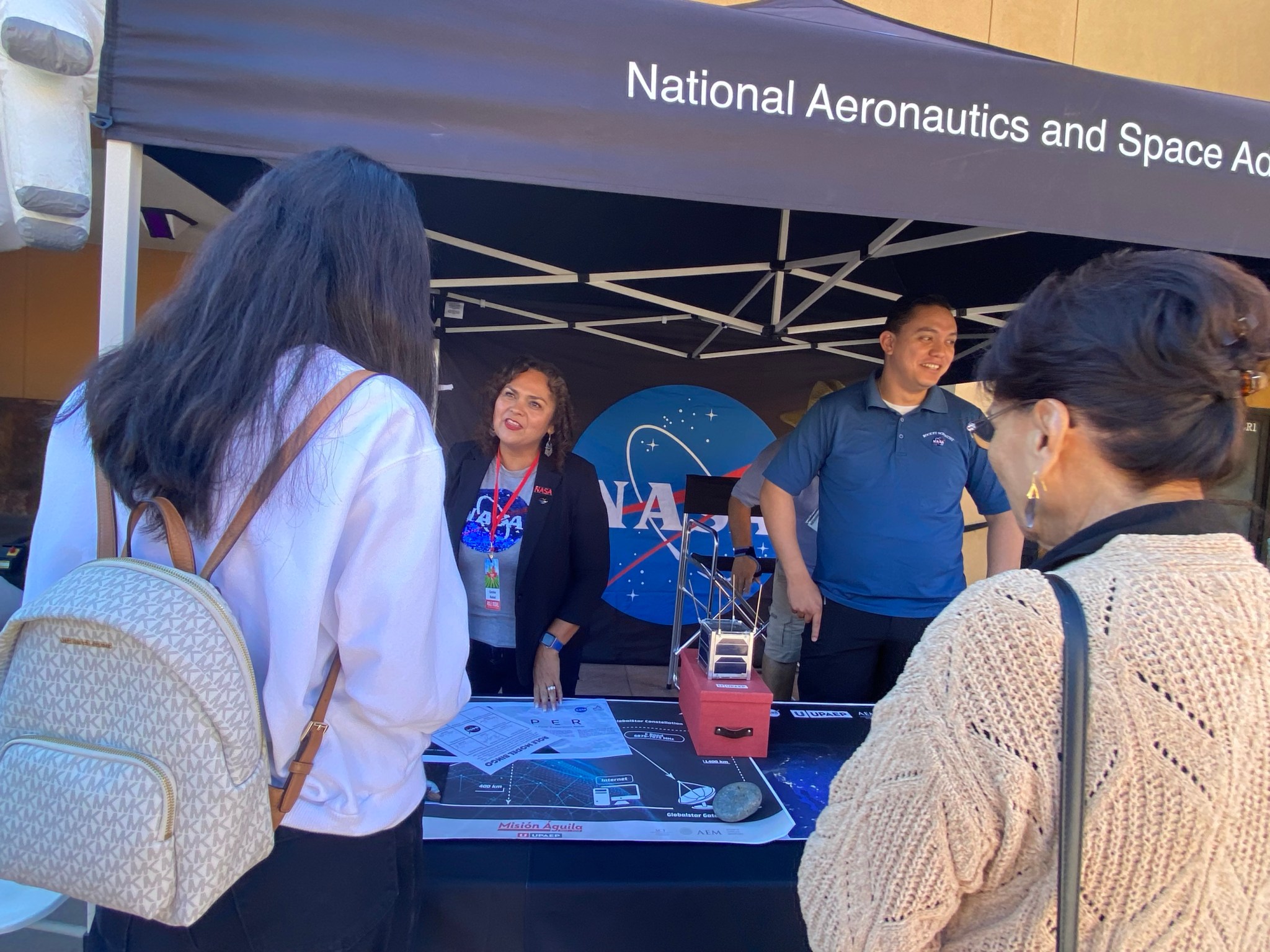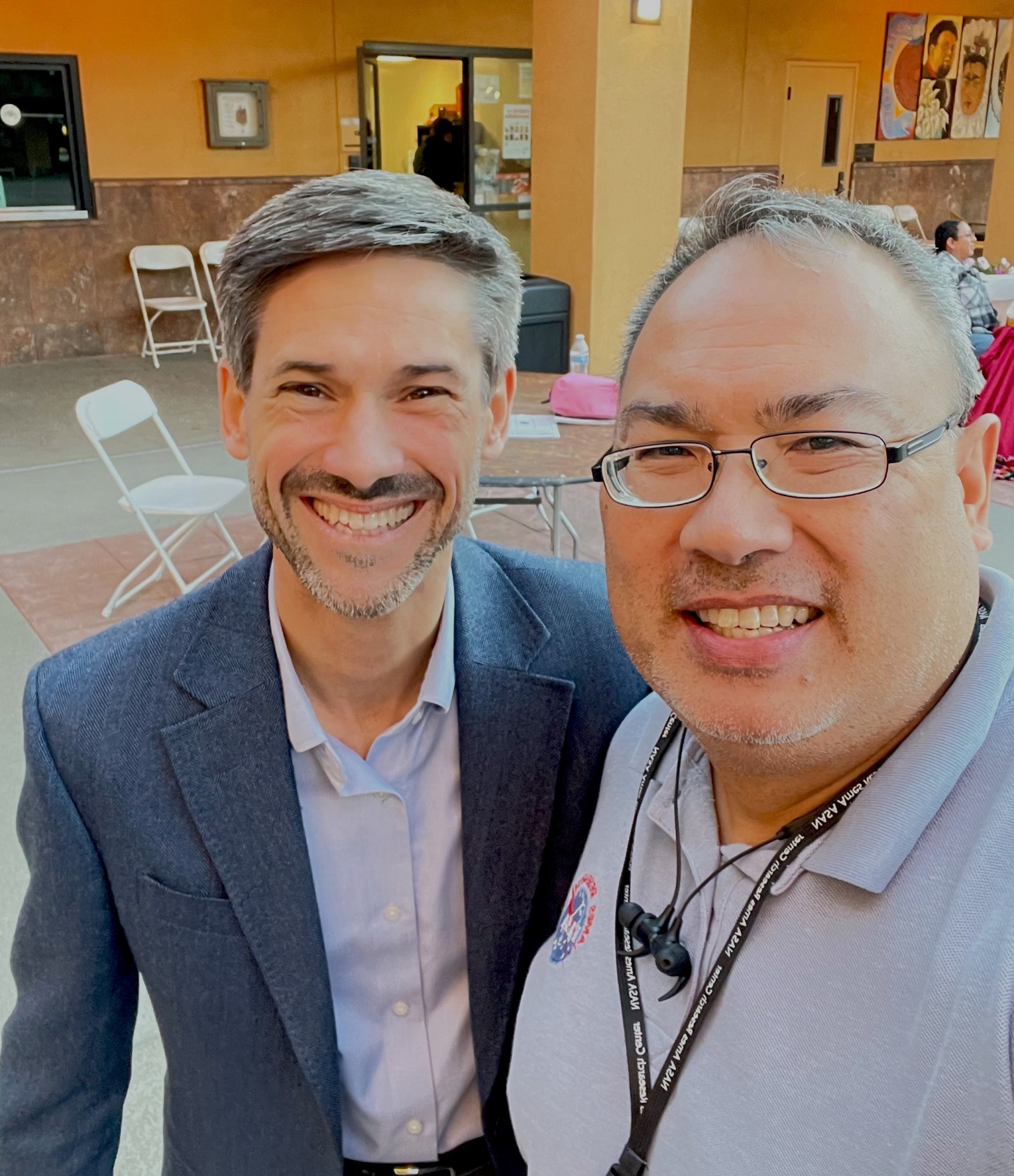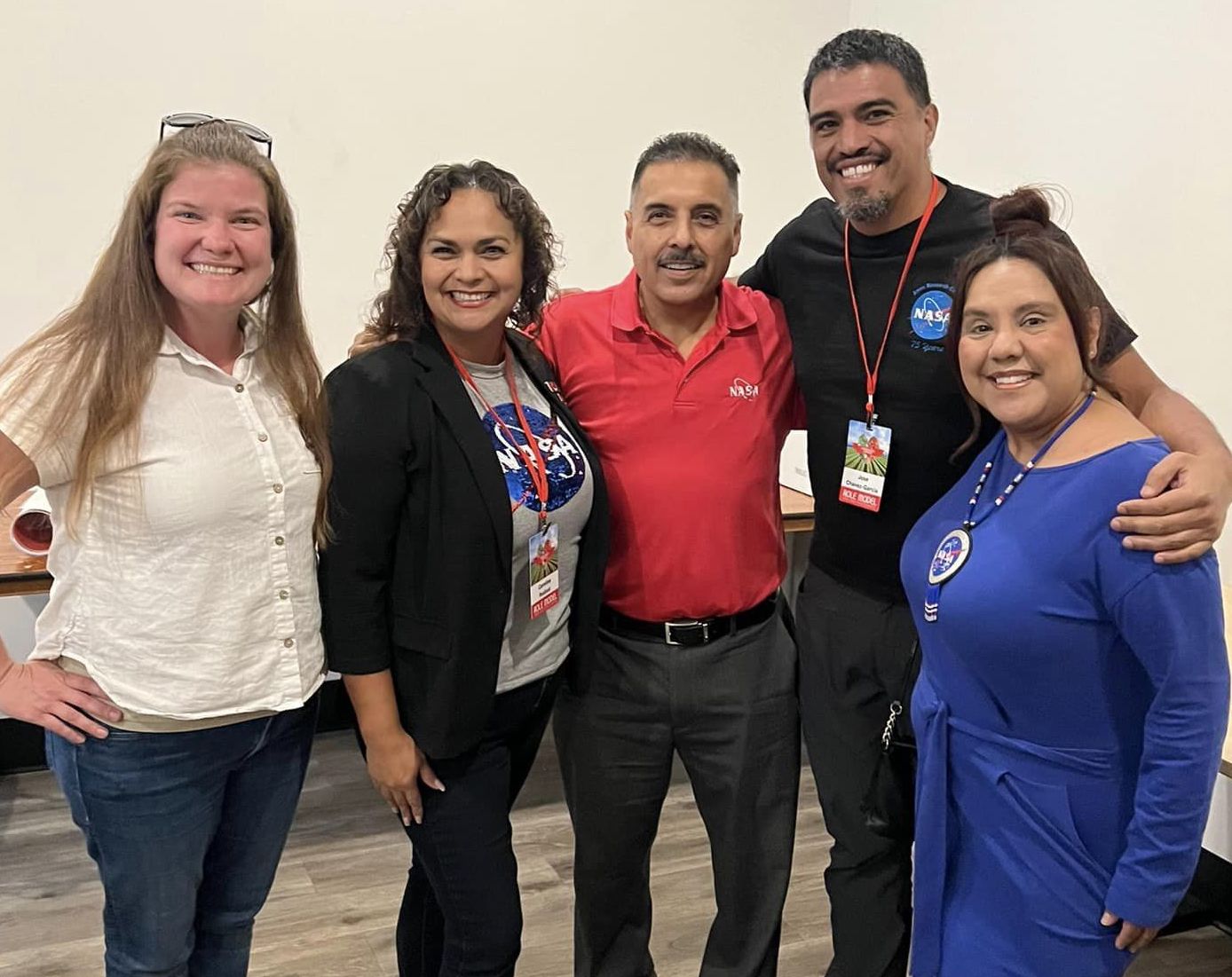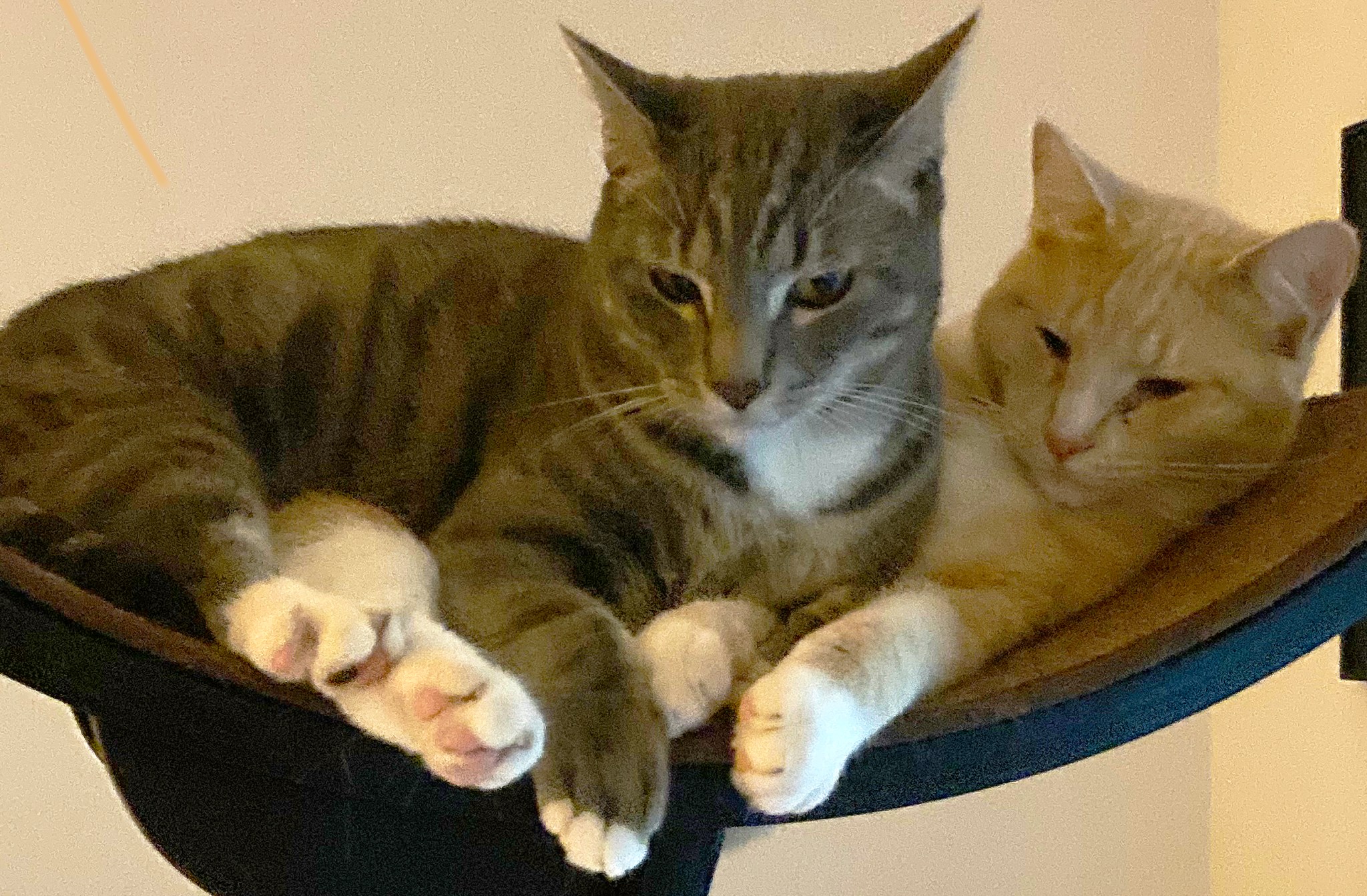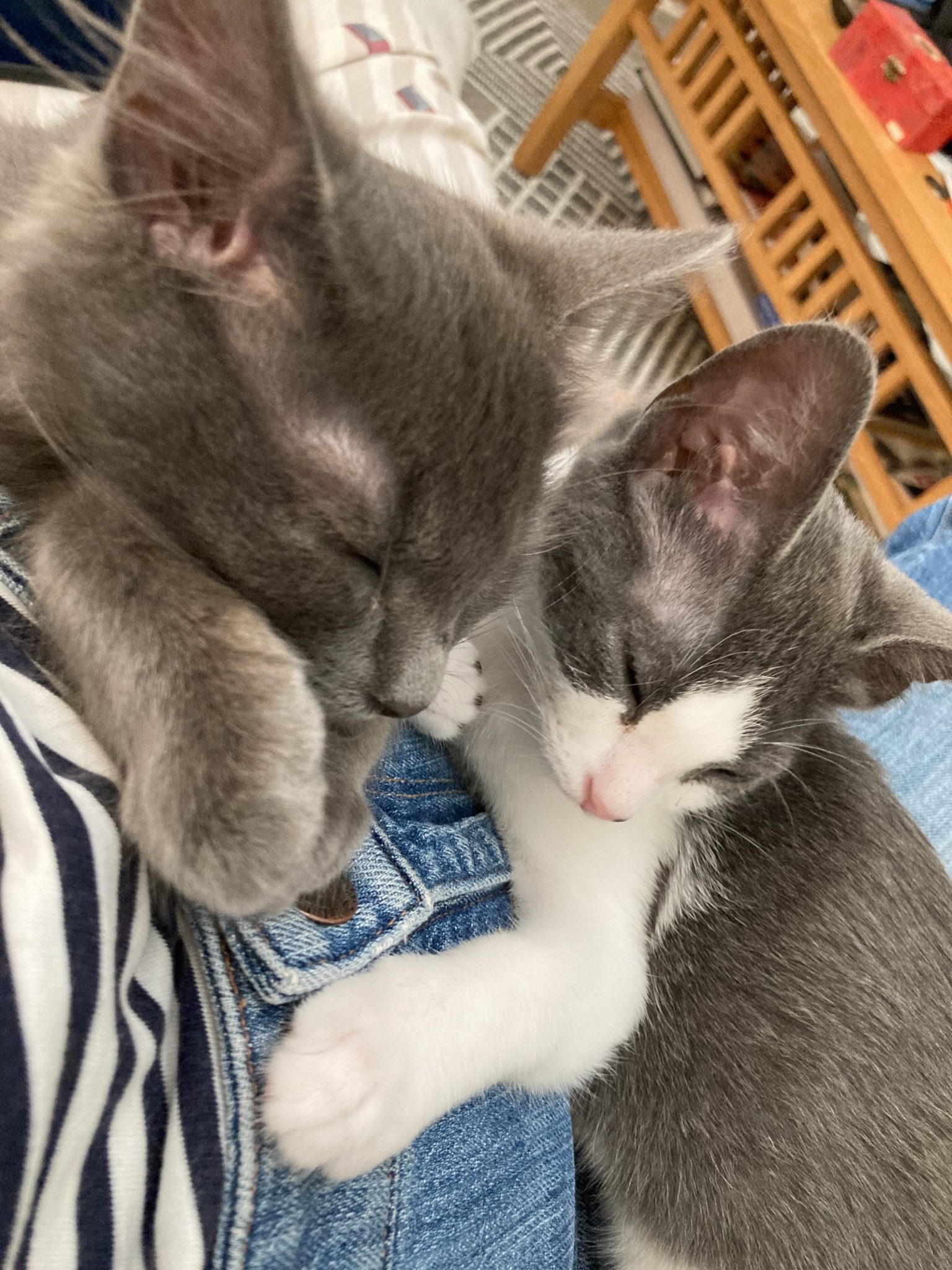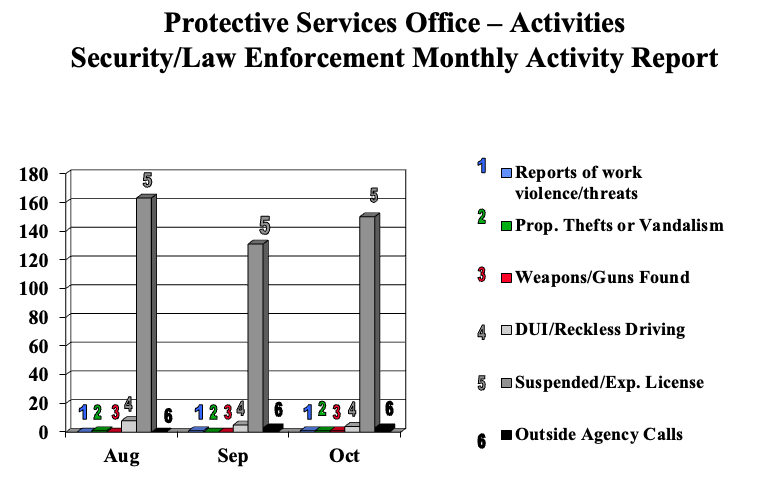2023 in Review: Highlights from NASA in Silicon Valley
It’s been another great year at NASA’s Ames Research Center in California’s Silicon Valley. Join us as we review some of the highlights of the science, engineering, and innovation from 2023.
Announcing a New Innovation Hub Planned for NASA Research Park at Ames
Berkeley Space Center is a proposed new campus of the University of California, Berkeley, and an innovation hub for research and advances in astronautics, aeronautics, quantum computing, climate studies, and more. Planning to join Ames as a tenant of our NASA Research Park in Silicon Valley, the new campus aims to bring together researchers from the private sector, academia, and the government to tackle the complex scientific, technological, and societal issues facing our world.
Mapping Water Distribution on the Moon’s South Pole
Using data collected by the now-retired Stratospheric Observatory for Infrared Astronomy (SOFIA), researchers shared the first detailed, wide-area map of water distribution on the Moon. Understanding how much water lies beneath the lunar surface, and how it’s distributed, will help guide future missions like VIPER, as well as prospective sites for human habitats.
Colliding Moons May Have Formed Saturn’s Rings
New research suggests Saturn’s icy moons and rings were formed by a collision a few hundred million years ago, creating debris that gathered into the planet’s dusty, icy rings or clumped together to form moons.
NASA and Airlines Partner to Save Fuel and Reduce Delays
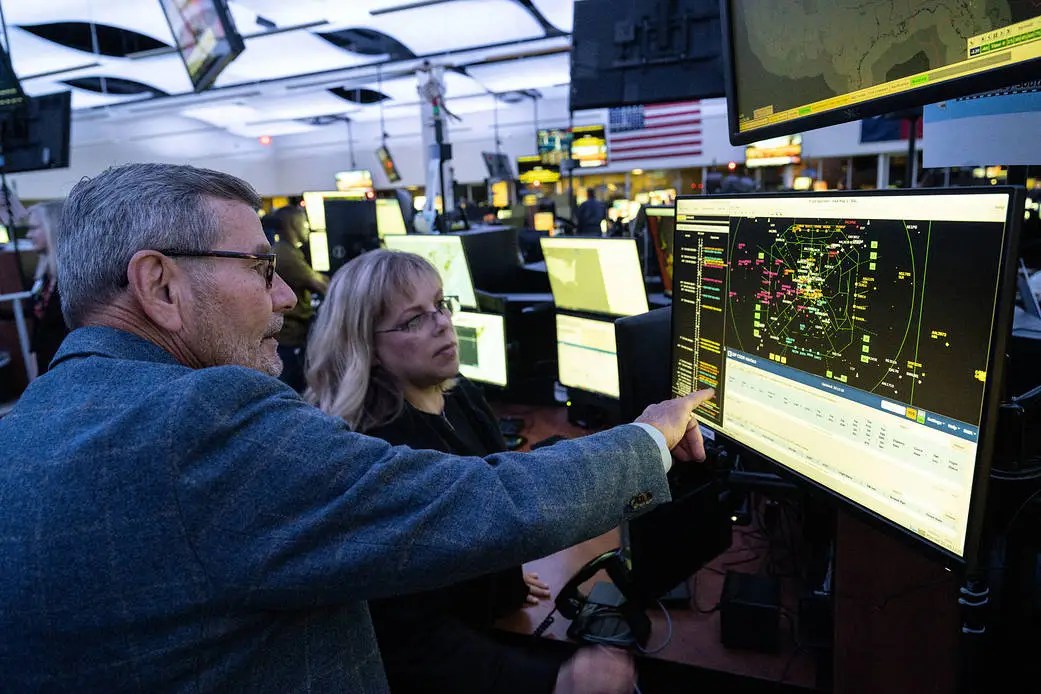
NASA Leaders View Climate Science, Wildfire Innovations at Ames
NASA’s top leadership, industry experts, and legislative officials visited Ames in April to learn about about the center’s climate science efforts and innovations in aeronautics that will help scientists and engineers better understand climate change and mitigate natural disasters like wildland fires.
Starling Takes Flight
In July NASA’s Starling mission, managed at Ames, launched four CubeSats into low-Earth orbit to test robotic swarm technologies for space. You can track mission milestones via the Small Satellite Missions blog, and follow the mission live in NASA’s Eyes on the Solar System 3D visualization.
NASA’s First Robotic Moon Rover
This year engineers began assembling NASA’s first robotic Moon rover, VIPER — short for the Volatiles Investigating Polar Exploration Rover — and the agency is giving the public a front row seat to watch along as the rover takes shape. While individual components, such as the rover’s science instruments, lights, and wheels, were assembled and tested, the VIPER team also completed software development, mission planning, and tricky tests of the rover’s ability to drive off the Astrobotic Griffin lunar lander and onto the lunar surface.
Bringing Home Ancient Space Rocks
NASA’s OSIRIS-REx mission – short for the Origins, Spectral Interpretation, Resource Identification, and Security-Regolith Explorer – returned to Earth in Sept. 2023, bringing with it extraterrestrial rocks and dust that it scooped up from an asteroid estimated to be 4.5 billion years old. Ames contributed to the spacecraft’s heat shield, anti-contamination systems, post-landing sample curation, and more.
Preparing to Send Yeast to the Moon’s Surface for Astronaut Health
NASA’s plans to explore the Moon and eventually go to Mars will bring humans deeper into space for longer duration missions than ever before. These extended missions beyond low Earth orbit pose certain health risks to astronauts. The Lunar Explorer Instrument for Space Biology Applications team is preparing an experiment to study yeast’s biological response to the lunar environment to help understand and mitigate health risks for astronauts.
X-59 Team Moves Toward First Flight in 2024
This year, NASA’s X-59 team installed the finishing touches to the aircraft’s tail structure and moved it from its assembly facility to the flight line to perform structural testing. The X-59 quiet supersonic aircraft will take its first flight in 2024.
Celebrating a Stellar Year for Webb Telescope Science
The James Webb Space Telescope’s Near-Infrared Camera instrument produced a feast for the eyes with a view into a star-forming region, named Sagittarius C, in the heart of the Milky Way. The image reveals a portion of the dense center of our galaxy in unprecedented detail, including never-before-seen features astronomers have yet to explain.
Supercomputer Simulations Lead to Air and Space Innovations
Simulations and models developed using technology at the NASA Advanced Supercomputing Facility (NAS) help researchers and engineers develop innovations in air and space. Modeling turbofan engines could lead to designs that reduce engine noise and improve efficiency by understanding where noise is generated inside the machine.
S-MODE Sails the Seas and Soars through the Sky
The Sub-Mesoscale Ocean Dynamics Experiment (S-MODE) logged its final field expedition, and they took a team from the TODAY Show along for the ride. S-MODE combined airborne instruments, research ships, and autonomous ocean gliders to get an unprecedented look at how gas and heat exchange at the ocean’s surface impacts Earth’s climate.
From Intern to Astronaut, and Back to Ames
NASA astronaut Jessica Watkins, who was once an intern at Ames, returned to the Bay Area in Feb. 2023 to visit with local elementary schools and speak with Ames employees. Watkins started her career with NASA at Ames, where she conducted research on Mars soil simulant supporting the Phoenix Mars Lander mission.
Second Gentleman Joins East Bay Kids for STEM Activities
Nearly 100 East Bay kids and their families got to experience the thrill of “launching a rocket” and “making clouds” at a fun-filled STEM event hosted in honor of Women’s History Month at the East Oakland Youth Development Center in Oakland, California, in March 2023. Second Gentleman Douglas Emhoff, NASA Ames Research Center Director Dr. Eugene Tu, and NASA astronaut Dr. Yvonne Cagle joined kids at the Manzanita Community School for hands-on activities and to distribute approximately 500 STEM Artemis Learning Lunchboxes aimed to inspire the Artemis generation to learn about NASA’s Artemis Program.
Top Leaders in Our Midst Hailed from the White House and Australia
In January, U.S. President Joe Biden landed at Moffett Federal Airfield, at Ames, on his way to visit storm-damaged regions in the state. Research conducted at our Silicon Valley center could help predict extreme climate-related weather events. Later in the spring, Vice President Kamala Harris arrived at Moffett before delivering remarks at a local company, and leaders of the Australian Space Agency visited Ames to learn about the center’s missions supporting NASA’s Artemis program, including the VIPER Moon rover, which will launch to the lunar South Pole in late 2024.
Astronaut Candidates Visit Ames and Learn about Heat Shields and More
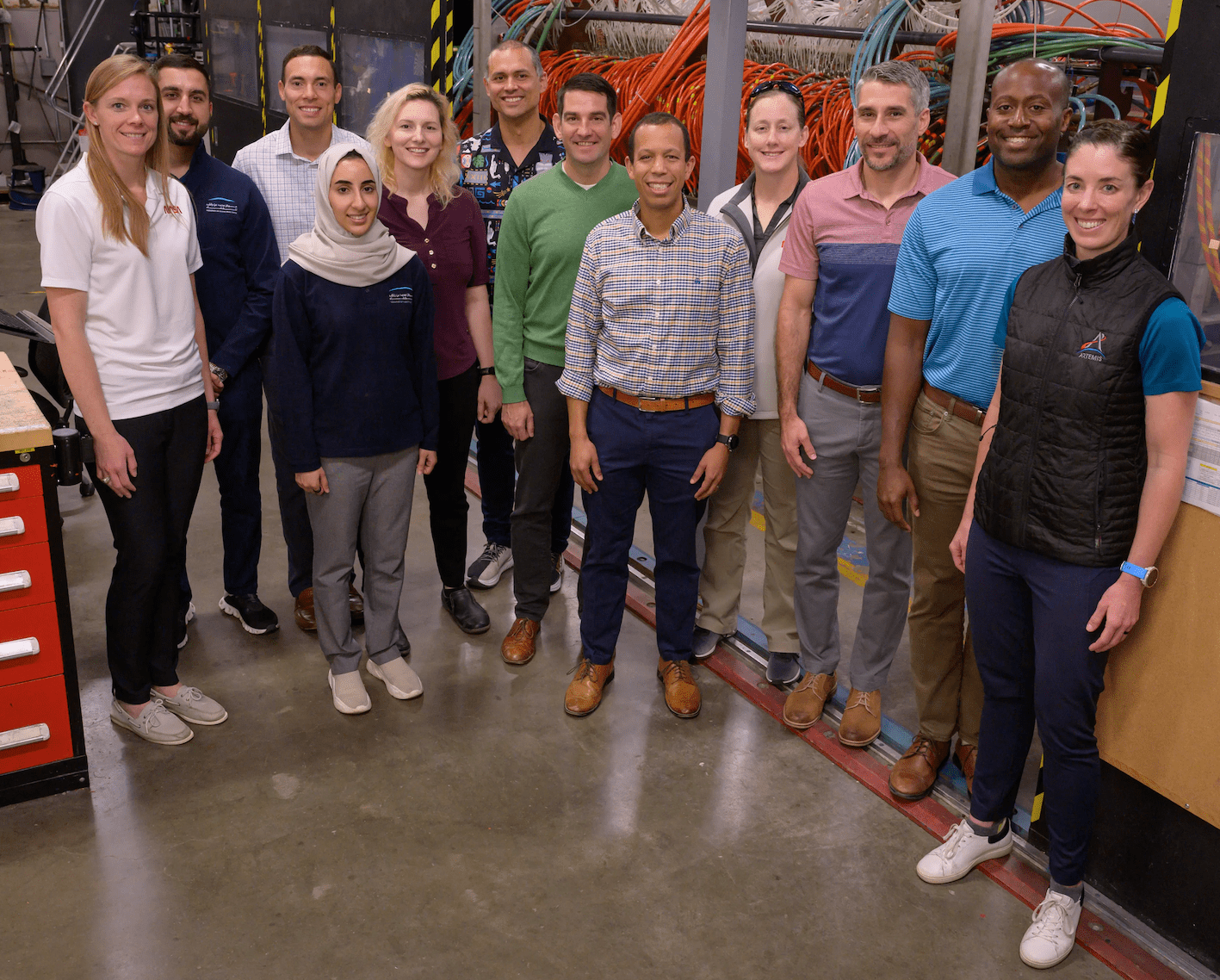
On Nov. 8, NASA’s current class of astronaut candidates toured Ames Research Center which included a stop at the Arc Jet Complex. In the arc jet facilities, Ames researchers test advanced materials that protect spacecraft from the extremely high temperatures of entering an atmosphere – whether Earth’s, Mars’, or another in our solar system.
Among the candidates aiming to join America’s astronaut corps are women and men who will potentially fly on future Artemis missions, performing science on the Moon and exploring the resources it holds. Work performed in the arc jet will help ensure all Artemis astronauts return home safely. For Artemis I, launched in November 2022, material used in the Orion crew module’s heat shield was tested here at Ames.
The astronaut candidates – including former Ames intern Deniz Burnham – also visited other Ames facilities, learning about their contributions to Artemis and more. These include wind tunnel testing and supercomputer simulations of the SLS (Space Launch System) rocket; development of the Astrobee free-flying robots that could assist future astronauts on missions; space biosciences research that will help keep crew healthy; and flight simulations at the Vertical Motion Simulator, where NASA’s human landing system program partners analyzed and improved early lander concepts to deliver humans to the lunar surface as part of the Artemis missions.
Public Invited to NASA's Viper Moon Rover Build Watch Party
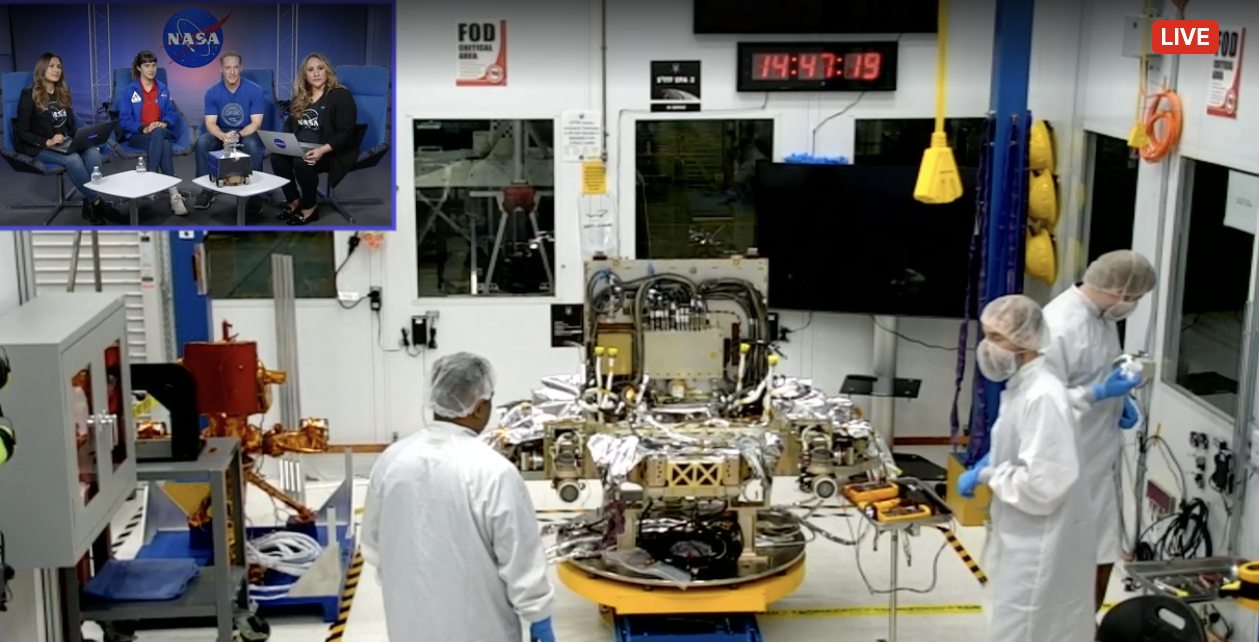
The public was invited to a live, front row seat to see NASA’s first robotic Moon rover take shape in the Surface Segment Integration and Testing Facility clean room at the agency’s Johnson Space Center in Houston. Members of VIPER — short for the Volatiles Investigating Polar Exploration Rover — and the Office of Communications at NASA Ames hosted watch parties and answered questions from the public about the mission in both English on Nov. 8 and Spanish on Nov. 9. To view both versions, visit: Nov. 8 VIPER Watch Party and Nov. 9 VIPER Watch Party.
These webchats and watch parties will occur as the rover is assembled and tested, approximately once a month from November 2023 through January 2024 . In late 2024, VIPER will embark on a mission to the lunar South Pole to trek into permanently shadowed areas and unravel the mysteries of the Moon’s water.
“We’re really excited for people to see the VIPER rover hardware coming together,” said Daniel Andrews, the VIPER mission project manager at NASA Ames. “All of our planning and ideas are now going into building this first-of-its-kind Moon rover.”
Individual components such as the rover’s science instruments, lights, and wheels, have already been assembled and tested. Once delivered to the testing facility, other components will be integrated together to become the approximately 1,000-pound VIPER.
Months of final assembly and testing lie ahead before VIPER is ready to ship to the Astrobotic Payload Processing Facility in Florida in mid-2024. VIPER’s lunar landing atop Mons Mouton is scheduled for late-2024, where it will get a close-up view of the lunar surface and measure the location and concentration of water ice and other resources. Using its drill and three science instruments, researchers will gain a better understanding of how frozen water and other volatiles are distributed on the Moon, their cosmic origin, and what has kept them preserved in the lunar soil for billions of years. VIPER will also inform future Artemis missions by helping to characterize the lunar environment and help determine locations where water and other resources could be harvested to sustain humans for extended missions.
NASA Ames manages the VIPER mission and also leads the mission’s science, systems engineering, real-time rover surface operations, and the rover’s flight software. The rover vehicle is being designed and built by NASA’s Johnson Space Center in Houston, while the instruments are provided by Ames, Kennedy Space Center in Florida and commercial partner Honeybee Robotics in Altadena, California. The spacecraft, lander, and launch vehicle that will deliver VIPER to the surface of the Moon will be provided through NASA’s Commercial Lunar Payload Services initiative, delivering science and technology payloads to and near the Moon.
For more information about VIPER visit:
Ames Exhibits and Panels Draw Thousands at San Francisco FanExpo
Staff from the Office of Communications at Ames hosted exhibits along with two panel discussions, one regarding VIPER and the other Artemis, at the San Francisco FanExpo on Nov. 24-26. More than 4,500 guests visited the Ames booth, which showcased the VIPER mission and its connections to Artemis alongside Ames Center Director Dr. Eugene Tu, Project Manager for VIPER Dan Andrews, and many other subject matter experts.
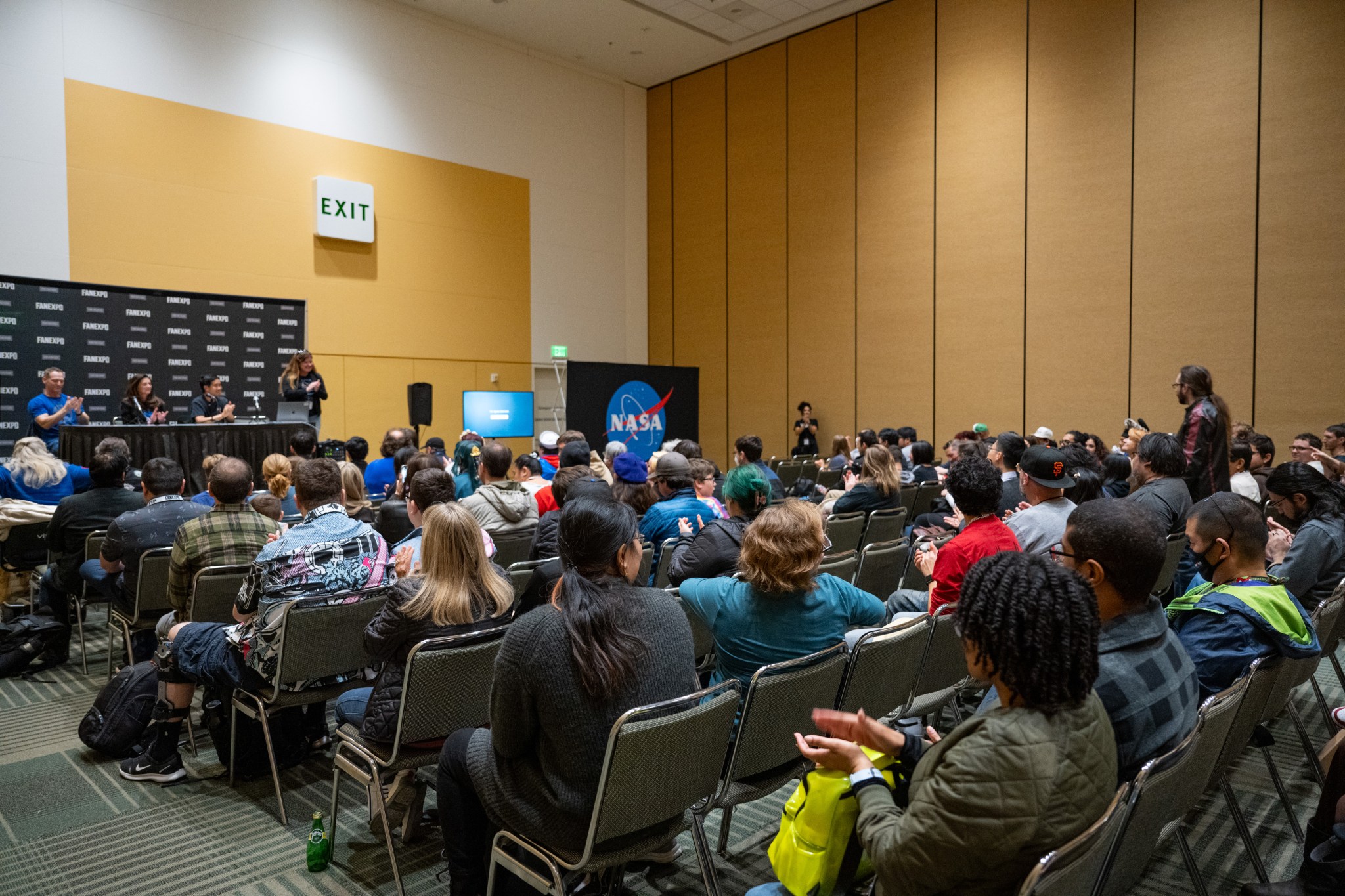
On Saturday, Nov. 25, Cara Dodge hosted the VIPER panel (above photo), and Arezu Sarvestani hosted the Artemis panel right afterwards with Parul Agrawal, Ames Lead for Orion Spacecraft Operations; Lara Lash, Aerospace Engineer ; and Seth Schisler, Technology Manager. Both panels solicited many questions from the public and resulted into follow-up interactions at the booth. It was quite a successful event, sparking additional interest in NASA’s upcoming VIPER and Artemis missions.
Aerospace Engineer Brings NASA into Hawaii’s Classrooms
The field of aerial vehicle autonomy focuses on self-reliance, building the flight equivalent of puppets without puppeteers. Behind the scenes, however, is a rich network of people and systems that work together to develop frameworks, test new technologies, and inspire a pipeline of engineers to create the breakthroughs of the future. Encouraging kids to dream big and pursue their STEM passions is especially important to Evan Kawamura, a guidance, navigation and control engineer in the Intelligent Systems Division at NASA’s Ames Research Center in California’s Silicon Valley.
Kawamura takes mentorship and STEM outreach as seriously as his work in unmanned aerial vehicles (UAVs) and Advanced Air Mobility (AAM). He extends his duty as an engineer from his office to classrooms across Oahu, Hawaii, where he lives. He has led drone-building workshops, presented about his journey to NASA, and connected with hundreds of students and educators. Most recently, Kawamura returned to his alma mater and reunited with his sixth-grade teacher, Mrs. Kristen Stoker, to talk to her students about his work at NASA.
“Since my family, teachers, advisors, mentors, and professors provided me with wonderful opportunities and experiences that inspired and prepared me for engineering, I feel that it’s crucial to continue to inspire the next generation,” he said. “If we do not protect, inspire, and educate our children, then the future is dark and uncertain.”
Kawamura writes code that helps aerial vehicles launch, fly, and land without intervention from human operators. One of his early proud moments was in the summer of 2019 when, with the help of his team lead and mentor, Corey Ippolito of NASA Ames’ Airborne Science Program, he successfully programmed a six-propellered hexacopter to launch from and return to a defined point in space without a human driver.
“It was very rewarding and fulfilling to see our efforts pay off both in simulation and in a real world flight test,” Kawamura said. “The work also became the baseline autonomy code for others on our team and my graduate school research too, so I felt a lot of pressure during development but a huge relief when it worked.”
Kawamura comes from a long line of builders and engineers, back to his boatbuilding great-great- grandfather who moved to Hawaii from Japan in 1909 with his nine-year-old son. Evan’s father, a software engineer, bought him science and engineering books, and entertained endless questions about how things work. His grandfather, a contractor who built the house Evan’s dad grew up in, was a fan of origami and spent countless hours teaching Evan to fold boats and planes. His family inspired in him a fascination for the ways different materials could fit together like trains and LEGO to make something new, but sometimes he didn’t get to play with his creations.
“I got excited to create a battle with all the paper planes and boats my grandpa and I made,” Kawamura said. “But he fell asleep before we could start playing.”
Kawamura joined Ames as an intern while getting his PhD at University of Hawaii at Manoa. He completed his first internship in 2018, returned in the spring of 2019, and accepted a NASA Pathways internship later that summer. In 2021, Kawamura converted to a remote full-time employee at Ames. All along the way, he relied on the guidance and support of his family, mentors, and teammates. That experience drives him to pay forward the inspiration and encouragement that helped him get where he is today.
“Growing up in Hawaii fosters a ‘togetherness’ mindset that is very inclusive and family-oriented,” he said. “Helping others, sharing burdens, and having each other’s backs opens channels of communication to build friendships and foster collaboration, which is what aloha is all about. The cool and strange thing is that I see the aloha spirit at NASA Ames, which was one of the main reasons that made me want to work at NASA.”
“A Million Miles Away” Exclusive Screening Held for Farmworker Families
by Maria C. Lopez
Local farmworker families had a special opportunity to meet former astronaut Jose Hernandez and watch a screening of the movie “A Million Miles Away” on October 29, at the Mexican Heritage Plaza in San Jose. The movie highlights Hernandez’ humble beginnings as a farmworker and inspires viewers to reach for the stars and pursue their dreams despite obstacles. The event was organized by Darlene Tenes, founder of the Farmworker Caravan, supported by the Santa Clara County Office of Education Migrant Education Program, and began with a STEM fair attended by City of San Jose Mayor Matt Mahan, who connected with attendees and booth hosts.
The STEM fair showcased NASA; the Latinos at Amazon employee resource group (ERG); alpha public schools, where one in San Jose is named after Jose Hernandez; and local Hispanic community-based organizations. The NASA booth featured NASA’s graphic novel “First Woman” (La primera mujer) and NASA posters in Spanish as well as English content on various missions and was staffed by the Office of Communications in partnership with Ames’ Hispanic Advisory Committee for Employees (HACE) ERG, including Jose Chavez-Garcia, current junior research scientist – Analytical Mechanics Associates. Chavez-Garcia was recognized at the event as one of the role models for starting with a farmworker background and achieving professional success. Participants enthusiastically enjoyed interacting with the NASA Ames staff and taking selfie photos with the enormous NASA inflatable rocket, astronaut, and meatball logo.
During the movie screening, a press conference was held and Hernandez spoke about the value of the Hispanic workforce in the United States. Hernandez was asked what he wanted people to take away from the movie and he expressed “never, ever give up on yourself.” In addition, Ames’ Carolina Rudisel, also recognized as a role model at the event, was interviewed by local media, including ABC7 Bay Area. Rudisel has multiple roles at Ames – protocol officer, VIPER project coordinator, and special emphasis program manager for African Americans. She shared about her childhood farm working background and emphasized the significance of the movie “A Million Miles Away” as representation matters, and many students and families realize possibilities through Hernandez’ experience.
Following the movie, participants were ecstatic for Hernandez to greet the group in-person and participate in a fireside chat involving a question-and-answer session with the audience. Hernandez warmed everyone’s heart further by meeting with people individually. The NASA Ames staff was equally excited to meet Hernandez and honored to promote NASA at the powerful community event.
Consider Fostering and/or Adopting Cats from Ames
The Ames Cat Network needs volunteers to occasionally – very occasionally – foster cats. Would you consider fostering cats trapped at Ames? It comes down to a rare, temporary stint taking care of a cat or kitten abandoned on the Ames campus. The job can be challenging. Some fosters are super shy or skittish. Some are ill, which is perhaps why they were abandoned in the first place.
But it is so rewarding! There is the relief when they emerge from under the sofa. The warm fuzzy when they accept a treat from your hand. The pleasure when they curl up beside you, purring. The joy when they beg for cuddles, head-butt you to show affection, sleep peacefully on your lap. And there’s the satisfaction when they get adopted and become members of a new family. But underlying it all is the knowledge and pride that you’ve saved a life.
The Ames Cat Network needs more fosterers. We’ve been incredibly lucky that no cats were trapped during the pandemic. But that lucky streak will inevitably end, and we have to be prepared. We need people who would be willing to give of themselves for a short time to save an animal.
We also need help getting the word out about our cats to potential adopters.
Find more information at https://amescatnetwork.weebly.com/contact-us.html.
Statistical Summary of Activities of the Protective Service Division’s Security/Law Enforcement and Fire Protection Services Units for Period Ending October 2023




























